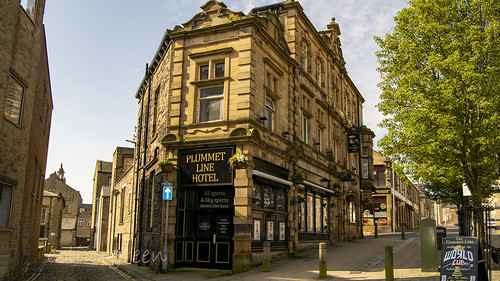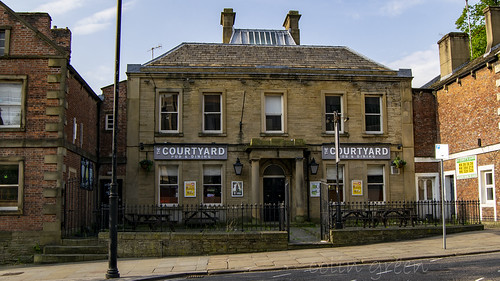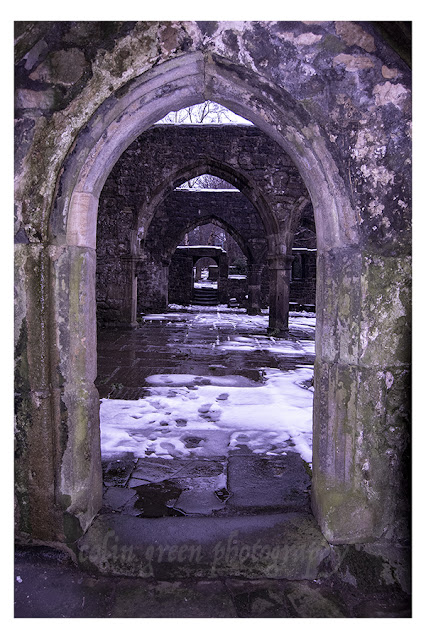Nestled in the heart of Halifax, a remarkable building that first opened its doors in 1913 as The Picture House has witnessed a century of changing tastes and entertainment trends. For nearly five decades, it served as a beloved cinematic palace, enchanting audiences with the magic of the silver screen until its initial closure in 1960.
After a brief two-year hiatus, the building underwent its first significant transformation, reopening its doors as a bustling bingo hall. This new chapter lasted for just over a decade until 1973, when the allure of cinema once again reclaimed the space. It resumed its role as a picture house, though this revival was relatively short-lived, with the curtains falling for a final time in 1982.
Another period of dormancy followed, but the building was far from finished. In 1987, it burst back onto the scene, reinvented as the lively Coliseum Nightclub and the accompanying Maine Street bar. For years, these venues were staples of Halifax's nightlife, providing a vibrant setting for countless evenings out. As the decades turned, the building continued to evolve with the times. In recent years, it has been known by various names, including Liquid and Atik, while the Maine Street bar section has been rebranded as Vinyl, reflecting the enduring appeal of music and entertainment.
This fascinating architectural chameleon holds a significant place in Halifax's heritage, having been designated a Grade II listed building, ensuring its unique story and structure are preserved for future generations.
Bar Rouge

Today, the building at 21-23 Silver Street in Halifax pulses with the vibrant energy of three distinct nightlife venues: Bar Rouge, Fusion, and Panacea. But this grand edifice has a history far richer and more varied than its current incarnation suggests, reflecting significant shifts in Halifax's social and economic landscape.
Originally, this prominent site was home to The Globe public house, a traditional establishment that likely served as a local gathering spot. Its first major transformation saw it become the head office of the Halifax Equitable Bank. This change speaks to the burgeoning financial sector in Halifax during the early 20th century. The bank's independence, however, was relatively short-lived, as it was acquired by Martins Bank in 1927. This acquisition was part of a broader trend of consolidation within the British banking industry.
The building continued its life as a financial institution, becoming a branch of Barclays Bank in 1969 after Martins Bank was absorbed into the Barclays group. This era marked its final chapter as a banking hall, with the branch eventually closing its doors in 1985.
The early 1990s heralded a dramatic and costly transformation. Recognizing the building's potential, Mansfield Brewery invested heavily to convert it into The Coiners Bar. This ambitious project saw the former banking hall reimagined as a large, multi-level pub, embracing the popular trend of super-pubs that emerged during that decade. The name "Coiners" was a clever nod to Halifax's historical connection with the infamous Cragg Vale Coiners, a gang of counterfeiters operating in the 18th century, adding a touch of local intrigue to the venue.
Since its days as The Coiners Bar, the building has experienced a series of ownership changes and rebrandings, each reflecting evolving tastes in entertainment and the dynamic nature of the hospitality industry. While its names and proprietors have come and gone, its role as a significant entertainment hub in Halifax's town centre has endured. Currently, this historic building, with its layers of commercial and social history, is once again up for sale, awaiting its next chapter.
Cat & Fiddle

The story of the Golden Lion is one of evolution and expansion, mirroring the changing landscape of Halifax itself. Initially, this venerable establishment occupied the distinctive whitewashed building nestled beside the bustling Bon Marche. However, as its popularity grew, so did its need for space. In 1987, the Golden Lion undertook a significant expansion, absorbing the adjacent building to accommodate its ever-increasing clientele.
But beyond its physical growth, the pub's identity also underwent a fascinating transformation. In 1981, it shed its formal moniker for a more affectionate and widely embraced nickname: the Brass Cat. This new identity resonated deeply with locals and visitors alike, becoming synonymous with good times and camaraderie. The Brass Cat era, however, wasn't to be its final form. Come 2014, the pub once again rebranded, adopting its current, equally evocative name: the Cat & Fiddle. This rich history of expansion and renaming reflects not just the ebb and flow of a single establishment, but also the vibrant, adaptive spirit of Halifax's social scene.
The Plummet Line

The year 1897 marked the birth of a new landmark in Halifax: The Plummet Line Hotel. This wasn't just another pub; it was a necessary replacement, a phoenix rising from the ashes of its predecessor, also named The Plummet Line Hotel, which was slated for demolition as part of the ambitious Bull Green redevelopment project. For a brief period, from 1897 to 1898, both iterations of The Plummet Line stood side-by-side, a testament to a local adage that declared, "there must always be a Plummet Line in this area of Halifax."
Beyond its architectural and historical significance, The Plummet Line Hotel holds a special place in the hearts of Halifax rugby league fans. Local legend has it that this very establishment served as the clandestine headquarters for the Halifax RLFC's coaching team and senior players. Within its walls, strategy was meticulously crafted, and the plays were drawn up that would lead to their glorious 1987 Challenge Cup run. These secret gatherings, affectionately known as the "Monday night club," seemingly paid off in spectacular fashion, culminating in Halifax's thrilling 19-18 victory over St Helens in the final at Wembley. The echoes of those tactical discussions and the cheers of a victorious town seem to linger within the Plummet Line's historic walls.
Railway Hotel

The Railway, a former Ramsden Brewery pub, stands within sight of Halifax Railway Station, its brick facade silently bearing witness to countless comings and goings. Yet, for all its unassuming appearance, this establishment holds a dark place in local lore. It was within these very walls, on a night shrouded in despair, that Janet Currie spent her final hours of freedom before committing an unspeakable act.
On that fateful evening, Currie lodged at The Railway, her mind perhaps a maelstrom of desperation. The following day, she made her way to the nearby Calder & Hebble Navigation Canal. Despite being observed by onlookers as she cast a bundle into the murky waters, and the subsequent discovery of a child's body, the legal outcome of her case remains one of Halifax's most perplexing mysteries.
Remarkably, despite being charged with the killing of a child on two separate occasions, the jury ultimately acquitted Janet Currie. This verdict, in the face of compelling eyewitness accounts and the tragic discovery, left many bewildered and continues to fuel debate to this day. The Railway, therefore, isn't just a pub; it's a silent monument to a haunting tale of a mother, a child, and a justice system that, for reasons unknown, found itself unable to convict.
The Courtyard

Originally christened
Holly House upon its construction in
1755, this venerable building began its long life as a private dwelling, echoing with the daily rhythms of domesticity for over two centuries. Its transformation into a public house was a relatively recent affair, occurring in the
1980s when it first opened its doors as
Carrington's. However, it was the subsequent incarnation that truly etched it into the local consciousness: renamed the
Bass House, it enjoyed its undisputed heyday throughout the
1990s and into the early 2000s. During this vibrant period, it wasn't just a pub; it was a pulsating hub of social activity, a place where countless memories were forged amidst the clinking of glasses and the buzz of conversation, becoming a true landmark in the local nightlife scene.
All the pictures remain the copyright of Colin Green.




























